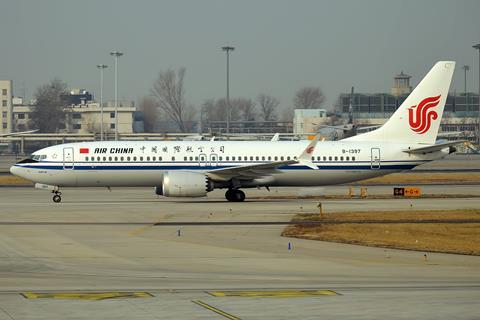Boeing has revised upwards its 20-year commercial fleet forecast for the Chinese market – citing a rise in domestic travel demand – though its outlook remains below that of 2021.
The North American airframer is forecasting Chinese carriers to need 8,560 new aircraft through 2042, only slightly higher than 2022’s outlook, which saw China requiring about 8,500 new jets.

By comparison, Boeing’s 2021 market forecast showed Chinese airlines to require 8,700 new aircraft.
Of the 8,560 new aircraft over the next 20 years, Boeing expects around 75% of them – or around 6,470 – to be narrowbody passenger aircraft, while around 18% are widebodies.
Earlier this year, the 737 Max returned to commercial service among Chinese operators after a three-year grounding following two fatal crashes. While Boeing has yet to score significant orders for the type, China’s three largest airlines have indicated plans to resume deliveries of 737 Maxes in the near term.
Boeing says it expects domestic market growth to “power demand” for new narrowbody aircraft, which include its 737 Max family.
The latest outlook also comes amid ongoing recovery in the Chinese airline sector, after Beijing eased most of its onerous ‘zero-Covid’ policies in early 2023. Domestic traffic has already surpassed pre-pandemic levels, though international traffic has been slower to recover.
Darren Hulst, Boeing’s vice president for commercial marketing, says: “As China’s economy and traffic continue to grow, Boeing’s complete line-up of commercial jets will play a key role in helping meet that growth sustainably and economically.”
On the services front, Boeing expects China’s commercial fleet to generate demand for $675 billion in aviation services. It also forecasts China to need more than 433,000 new personnel – including cabin crew, pilots and engineers – over the next 20 years, the highest globally.


























